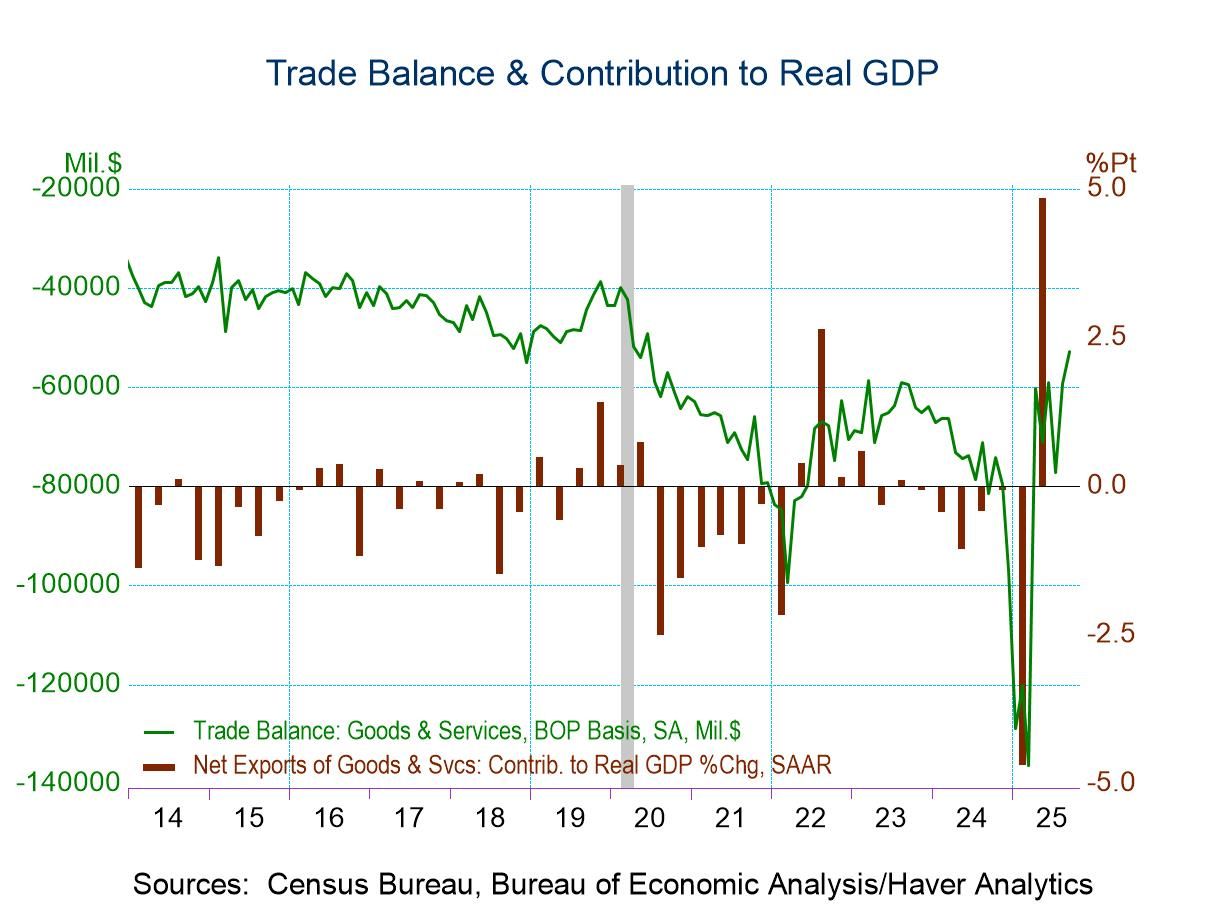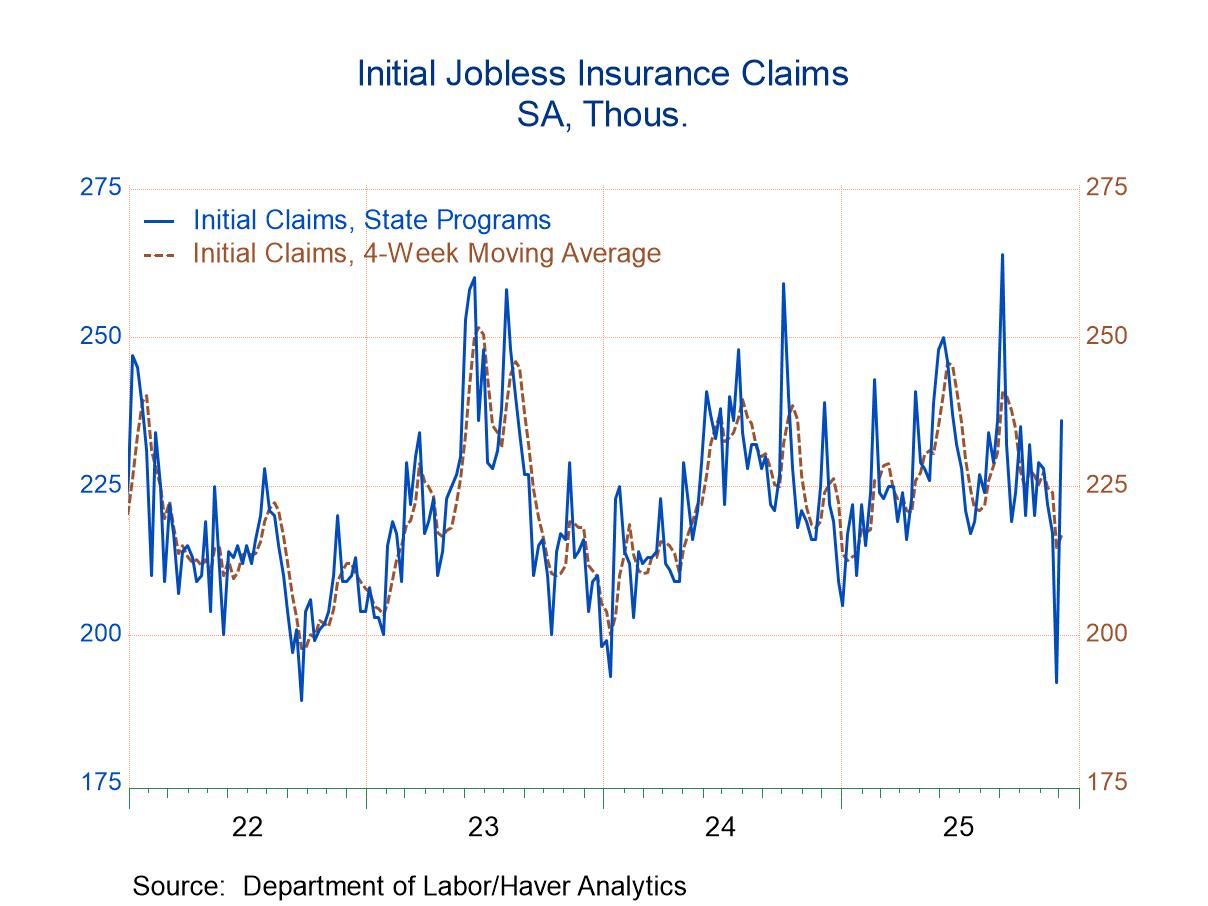German Manufacturing Orders and Sales Continues to Spiral Lower

German real orders fell by 1.5% in October after a surge of 7.2% in September. However, the September surge had followed a plunge of 5.4% in August. The German order series have been extremely volatile with volatility present both in the foreign series and in the domestic series. Foreign orders rose by 0.8% in October after jumping by 9.3% in September; that followed a 1.9% drop in August. Domestic orders fell by 5.3% in October after rising 4% in September. The September gain followed a 10.1% drop month-to-month in August. These have been extremely volatile times for orders.
Sequential order patterns- Sequentially orders are up 5.8% over 12 months; they’re up at a 14.2% annual rate over six months but now they’re falling by 0.4% over three months. Foreign orders show a continuing strong and even accelerating trend with orders up by 13.7% over 12 months, then rising at a 25.4% annual rate over six months, stepping up to a 36.5% annual rate over three months. In contrast, domestic orders fall by 5.3% over 12 months but then trim that rate of decline to -1.5% at an annual rate over six months. However, over three months German real domestic orders are falling at a 38.5% annual rate. As you can see, the weak domestic orders and the strong foreign orders nearly cancel one another out with an overall order result of minus 0.4% over three months.
Sales trends- Sales trends show a little bit more stability but still some volatility. Here we will focus on total manufacturing sales. Manufacturing sales fell by 1.2% in October after falling by 1.1% in September; in August real manufacturing sales had risen by 3%. I will not detail the growth rates here; you’ll find them in the table. However, looking at sales growth rates for consumer goods, consumer durables, consumer nondurables, capital goods, and intermediate goods, you see across each one of these sectors a significant amount of volatility in sales month-to-month from August to September to October.
Sequential real sales- Sequentially manufacturing sales fall by 3.8% over 12 months; they step-up to a decline of 5.5% at an annual rate over six months and then, over three months, there’s a turnaround in the trend as real sales rise at a 2.6% annual rate. Overall consumer goods, capital goods, and intermediate goods show declines in sales over 12 months and over six months. Over three months, consumer goods sales make a small decline, while capital goods sales surge at an 11.4% annual rate, and intermediate goods sales rise at a 4.2% annual rate. The turnaround and stability to overall real sales by sector owes substantially to capital goods, and to some extent intermediate goods, where sales have firmed up over the last three months after having a legacy of declines over six months and 12 months.
Europe – Beyond Germany The bottom of the table looks at industrial confidence readings from the European Commission for Germany, France, Italy, and Spain. All the readings for the last three months are negative readings and for each of the countries there’s a deterioration in October compared to September. All countries also showed deterioration from August to September. Spain in September is an exception. The sequential readings from 12-months to six-months to three-months show German industrial readings are negative and getting worse in each horizon. Italian readings are negative and getting worse on each shortened horizon as well. French readings are negative over 12 months; they’re worse over six months but then improve by just a tick over three months compared to six-month readings. For Spain, readings are negative and all the periods; however, they improve over six months compared to 12-months and then they improve again over three months compared to six-months although these improvements are stepwise small changes.
Quarter-to-date- The quarter-to-date readings show that orders are increasing early in the fourth quarter at a 7.5% annual rate. Foreign orders are surging at a 43.6% annual rate and domestic orders are contracting at a 32.1% annual rate. Total manufacturing sales are falling at a 5.6% annual rate in Germany with consumer goods sales rising 2.6% at an annual rate. Intermediate goods sales are up at a 2.3% annual rate and capital goods sales are falling at a 1.6% annual rate.
Europe’s rankings- For the industrial data, I present the queue standings for Germany, France, Italy, and Spain. We see Germany with the lowest industrial queue standings in their bottom 5.6 percentile. France stands in its 12.5 percentile; Italy stands in its 18.4 percentile; Spain has the relative strongest readings with a 32.7 percentile standing which puts Spain as the strongest respondent in the table even though in the lower third of its own historic queue of industrial readings. All of these are extremely weak readings, and these are the four largest economies in the European Monetary Union.


Europe: What condition its condition is in- Conditions on the monetary union remain quite weak for Germany and judging from the EU industrial confidence measures, conditions remain weak across Europe. At the same time, the inflation data are stuck showing less of a tendency for inflation to decline and more evidence of flatlining at a level that is mostly too high.
The chart is grim news for Germany- Specific order patterns and simple plots of real orders from late-2021 to date reveal a dropping trend in real terms. What this chart contributes to our understanding of orders in Germany is that recently the foreign order series has reversed and begun to move up sharply while the domestic order series continues to erode, continuing a long-term growth trend that's negative during this period. Both German domestic and foreign orders have been trending down but late in 2023 both domestic and foreign orders began to move up. However, early in 2024 a marked divergence began where the bounce that domestic orders, unraveled, and the series went back down to cling to its long growth downtrend. Foreign orders, at the same time, moved higher and have continued to increase as the gap between the two series now is extremely and uncharacteristically large. Germany has become extremely dependent on foreign demand for its growth as its domestic order series is weak and trending lower.
Robert Brusca
AuthorMore in Author Profile »Robert A. Brusca is Chief Economist of Fact and Opinion Economics, a consulting firm he founded in Manhattan. He has been an economist on Wall Street for over 25 years. He has visited central banking and large institutional clients in over 30 countries in his career as an economist. Mr. Brusca was a Divisional Research Chief at the Federal Reserve Bank of NY (Chief of the International Financial markets Division), a Fed Watcher at Irving Trust and Chief Economist at Nikko Securities International. He is widely quoted and appears in various media. Mr. Brusca holds an MA and Ph.D. in economics from Michigan State University and a BA in Economics from the University of Michigan. His research pursues his strong interests in non aligned policy economics as well as international economics. FAO Economics’ research targets investors to assist them in making better investment decisions in stocks, bonds and in a variety of international assets. The company does not manage money and has no conflicts in giving economic advice.





 Global
Global
